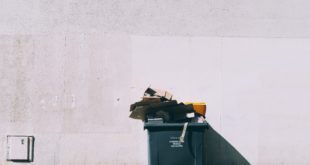Finishing work could be internal and outside. The internal concerns daubing and painting of surfaces, to outside are joint pointing, daubing, stacking of stones in an outside layer, facing by a sheeting.
To warm garage and to protect from effect of an atmospheric precipitation, it is necessary to plaster it. Plaster represents a layer of the hardened solution, which is put in one or 3—4 procedures on a surface with consolidation and alignment.
Usually plasters discriminate: depends on purpose — on usual and special; on kinds of binding — on cement, cement-limy, limy; on complexity of fulfillment — on simple, improved, high-quality.
Plaster works consist of preparation of surfaces, solution transportation to jobs, drawings and leveling of a plaster solution, finishing of apertures and corners.
Let’s speak about preparation of surfaces to daubing.
Before the beginning of plaster works it is necessary for you to level a surface and to clear it of dirt, stains and solution flows, and directly before daubing to wash out with water.
On brick surfaces notch with an axe seams depth not less than 1 cm or process steel brushes for making them rough.
Thickness of plaster can be defined with ranging of surfaces of walls and ceilings as follows. For this purpose it is necessary to beat in the top part of a wall on distance of 30 cm from each corner (across) a nail so that nail-heads were over a wall surface for a thickness of plaster. From their heads it is necessary to lower a plumb on distance of 30 cm (across) from a floor and to hammer in two nails. Having stretched a cord on diagonals and horizontals, advance a thickness of plaster and hammer in intermediate nails. Then by means of level tube, you should level nail-heads in one plane. Round nails you should do marks of a plaster solution in diameter of 80-90 mm on 3-5 mm above nail-heads. After setting of solution cut off to level of nail-heads.
Ceilings are ranging in the same order, but only with use of water flexible level tubes. For this purpose glass tubes with millimeter divisions put to a surface of a ceiling and observe equality of marks in levels of tubes.
In places of contact of wooden and brick surfaces as a rule establish metal grids.
And let me give you some information about daubing.
Plaster solution put on a surface not at once for all thickness, but by layers.
The first layer is rendering, its thickness should be about 5 mm and consists of a solution of a liquid consistence. The solution needs to be thrown over all surface a continuous layer, it becomes numb in a roughness, is linked for a full due to them and well kept on a surface.
The second layer — is a floating — it is made with more dense solution in some layers, thickness of each is no more than 7 mm. At pasting it level so that there was an equal and smooth surface. All materials, which are used for floating, it is necessary to sift through a sieve.
The third, top layer — is setting — is made by a liquid solution with small sand in the thickness to 2 mm. The solution of setting can be thrown at first, and then to level it.
If you need car garage – this site will help. Lots of samples of car garage products and direct access to the car garage sellers. All contact info on the site.
P.S. And don’t let laziness to stop you from finding the best deal about car garages. Don’t forget that we are living in the world where info makes life easier.
Due to this if you are properly armed with the information in your topic you can rest assured that you will always find the way out from any bad situation. So, please make sure to get back to this site on a regular basis or – best of all – sign up to its RSS. In such an easy way you will have a direct shortcut to the latest info updates here. Blogs can be helpful, you just need to know how to use them.
 Alternative Energy HQ solar power for homes, wind energy, and bio fuel issues
Alternative Energy HQ solar power for homes, wind energy, and bio fuel issues



